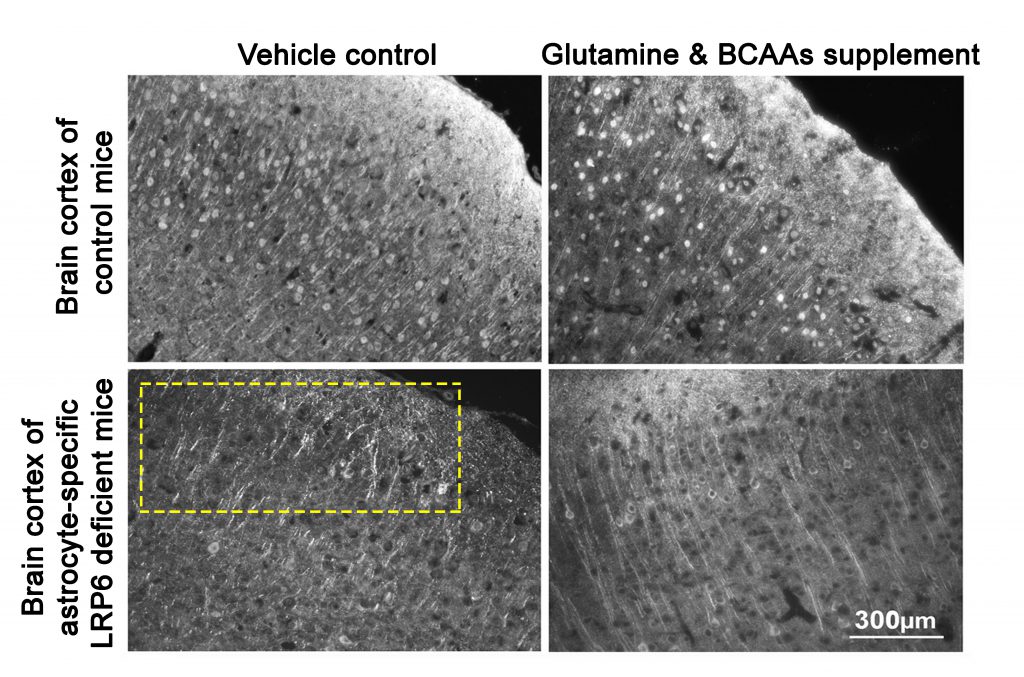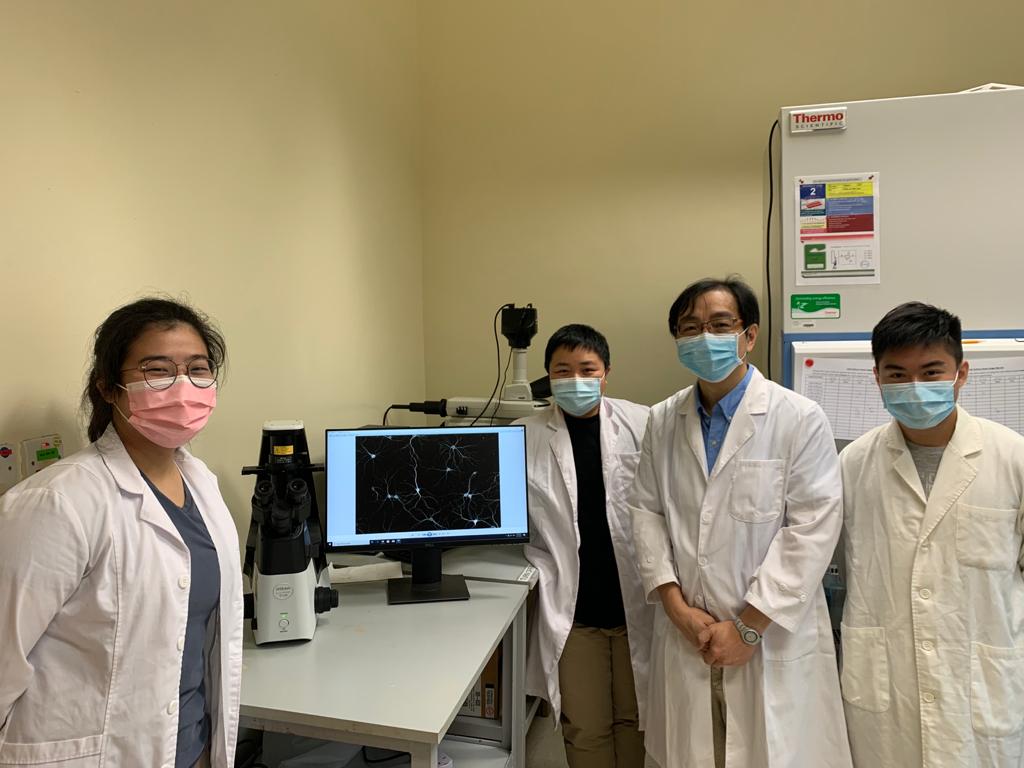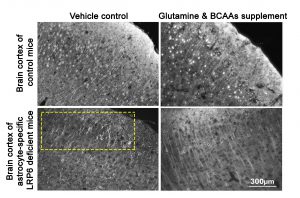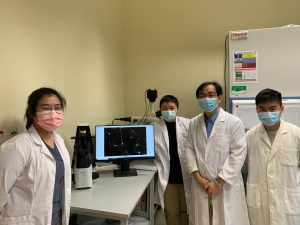CUHK
News Centre
CUHK Uncovers that Brain Cells in Alzheimer’s Patient Consumes Nutrition Essential to Neurotransmission
Study Supports Great Potential of Nutrient-based Approach in Managing Neurodegenerative Disorders
Alzheimer’s Disease (AD), the most common type of dementia, causes the death of neurons and leads to shrinking of the brain. Patients with AD will eventually experience gradual deterioration in memory, thinking, behaviour and the ability to perform everyday activities. Yet, scientists do not fully understand what causes this disease.
A recent research, conducted by a team from the School of Life Sciences at The Chinese University of Hong Kong (CUHK), suggests that early changes in brain metabolism may explain the neurodegeneration. The research team is the first to discover that a special gene variant causes astrocytes of the brain to exhaust the primary substance for neurotransmission, amino acids. The long term insufficient of amino acids may result in compromised neurotransmission and hence cognitive and memory impairments. Findings also indicate that direct brain supplement of the missing amino acids was effective in alleviating the neurodegenerative outcomes as well as the functional degeneration.
These findings lay the groundwork for developing novel and targeted nutrition-centric disease-modifying therapeutic strategies. The research paper has been published in Advanced Science, a prestigious scientific journal.
Metabolic dysregulation is commonly observed from the prodromal stages of AD
According to the World Health Organization statistics published in 2020, around 50 million people are suffering from dementia worldwide and there are nearly 10 million new cases every year, in which AD is the most common form of dementia, contributing to 60-70% of cases. While the predominant approach towards AD treatments has targeted beta-amyloid — the classic pathology of AD, the repeated failures of clinical trials of anti-amyloid therapies highlights the pressing need to identify novel molecular targets that may underlie AD pathogenesis. Recently, a growing body of evidence has hinted that AD is a pervasive metabolic disorder in which altered cellular fuel metabolism occurs at the early prodromal stages of the disease long before the symptoms manifest. Therefore, understanding how perturbations in metabolism are related to this prodromal stage is critical to identifying targets for disease-modifying therapies.
A previous study suggested an association between a synonymous single nucleotide polymorphism (SNP) in LRP6 gene and AD. In this study, the team found that this SNP is indeed correlated with diminished LRP6 gene expression in the forebrain region and the gene is predominantly expressed in astrocytes—the metabolic workhorses in the brain. By means of genetic deletion of LRP6 specifically in these cells within the adult forebrain of mice, both their cognitive and memory function were dramatically impaired. This phenotype is associated with extensive metabolic reprogramming occurring in the brain microenvironment.
Professor Kim Hei-Man Chow, Principle Investigator of this study and Assistant Professor of the School of Life Sciences, CUHK explained, “Findings show that the correct partitioning of fates of various metabolites is critical for maintaining the normal synaptic function in the brain. In normal situations, LRP6 drives a metabolic programme which facilitates astrocytes to utilise glucose as its major fuel source for energy production. In the absence of LRP6 function, the entire metabolic landscape in astrocytes is rewired, rendering them unable to utilise glucose but glutamine, an amino acid which is also a neurotransmitter released by neurons, together with branched chain amino acids (BCAAs) as fuel. This shift in metabolic dependence not only resulted in impaired brain glycolytic capacities but also exhausted amino acids that are essential for neurotransmitter recycling and synthesis. When this situation was manifested chronically, this consequently hampered synaptic fidelity which is the molecular basis of normal cognitive and memory functions.”
The metabolic changes do not only affect people who harbour the gene polymorphism at LRP6 locus but are also relevant to those having the genetic variant of the apolipoprotein E (APOE) E4 allele, the most common genetic risk factor of AD [Around 6.3-9.3% frequency in Asian (including Chinese) populations]. The research team found that protein product of the APOE-E4 allele hampers the normal functioning of LRP6 protein by trapping it inside the cell, keeping it away from the cell surface where it carries out its functions.
Clinically-ready nutrient supplementation may help manage neurodegenerative disorders
With recent advances in the field suggesting that brain metabolic dysfunction is at the core of Alzheimer’s disease, targeting the new metabolic need of the brain may become a potential strategy to manage the disease progression. The research team revealed that direct brain supplement of the missing glutamine and BCAAs was effective in alleviating the neurodegenerative outcomes as well as the functional degeneration.
Professor Chow added, “Specific nutrient supplementation is nowhere a new concept in clinics. Glutamine is supplemented clinically to patients with critical illness. On the other hand, all BCAAs are by default essential amino acids, and their oral supplements have been used with good tolerance in treatments of several neurologic diseases, including bipolar disorder, tardive dyskinesia, amyotrophic lateral sclerosis, and spinocerebellar degeneration. These clinical applications indicated that both glutamine and BCAAs can be consumed in considerable amounts by humans without adverse effects, and in many cases, with significant benefits. Together, our findings support that, in addition to traditional drug-based therapies, the adjunct nutrient-based approach has great potential for managing neurodegenerative disorders.”
This study was performed in collaboration with Professor Kwan Kin-Ming from the School of Life Science and Professor Ronald P Hart from the Rutgers University, USA. The project was supported by the General Research Fund, Collaborative Research Fund, Alzheimer’s Association Research Fellowship and the School of Life Sciences Start-up Funding.
About Professor Kim Hei-Man Chow
Professor Chow is an Assistant Professor of the School of Life Sciences, Faculty of Science at CUHK. She received undergraduate and doctoral training at the University of Hong Kong, postdoctoral training at the Cornell University (USA) and the Hong Kong University of Science and Technology. In July 2019, Professor Chow joined CUHK and started her independent research programme investigating the roles of metabolic dysfunction in neurodegenerative disorders. She is a recipient of the National Natural Science Foundation Excellent Young Scientist Fund in 2020.
The full text of the journal paper can be found: https://doi.org/10.1002/advs.202004993
Chow, H.M., et al., Low-Density Lipoprotein Receptor-Related Protein 6 Cell Surface Availability Regulates Fuel Metabolism in Astrocytes. Adv Sci (Weinh), 2021: p. e2004993.







